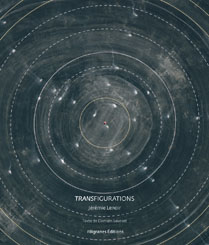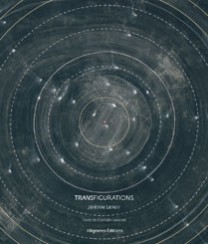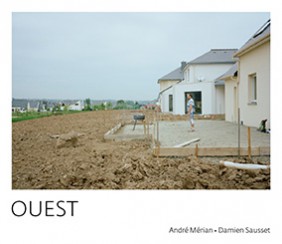At the crossroads of Central, the Paris region and the Atlantic coast, Anjou is strategically promoting its development. Its diverse and dynamic economic activity transformed the landscape and led to a constantly changing its territories. Agriculture, industries and businesses to renovate, cities, recreation areas and channels of communi-cations are renewed, the Maine-et-Loire defends its rich heritage while directing its policy and economic issues to modern and innovative.
Lenoir Jeremiah uses the aerial view, allowing it to shake up our assumptions and dial up a remote ontology. A convergence of the work of Alex MacLean, Marlyn Bridges and Edward Ruscha, aerial photography of J. Lenoir gets its meaning through the selection of areas and implementation of the protocol: the forgotten spaces or poor find themselves materialized in an abstract image which only reinforces their differences. By placing the man – builder and user – in the center of his concerns, he plays on the representation of reality – for removal of spatial cues, assemblages of images or loss of scale, it attempts to transform imagination.
Lenoir Jeremiah uses the aerial view, allowing it to shake up our assumptions and dial up a remote ontology. A convergence of the work of Alex MacLean, Marlyn Bridges and Edward Ruscha, aerial photography of J. Lenoir gets its meaning through the selection of areas and implementation of the protocol: the forgotten spaces or poor find themselves materialized in an abstract image which only reinforces their differences. By placing the man – builder and user – in the center of his concerns, he plays on the representation of reality – for removal of spatial cues, assemblages of images or loss of scale, it attempts to transform imagination.
Jérémie Lenoir is represented by Les douches la galerie
Jérémie Lenoir Born in 1983, moving first into science, mathematics and computer science, before turning to the work of the image. After studying engineering at the Ecole Polytechnique de Tours, he joined the Institute of Visual Arts in Orleans where he received his support and DNSEP in 2009. Without proper subject, without special intention for an objective representation of "truth" of the landscape, his photographs offer a unique and sensitive journey into what Marc Augé calls "non-places". Deeply influenced by artists from the Art Academy of Dusseldorf and the themes of Jurgen Nefzger, R. Depardon or Thierry Girard.
Damien Sausset is both historian, curator, journalist, art critic for ArtPress, Connaissance des Arts or The Eye. After an experience of MoMA curator at New York, he completed several commissions for exhibitions, including "Henri Foucault" at Palazzo Fortuni at the Venice Biennale (2005), "Some French photographers" in Beijing (2005) or "Evariste Richer "in Bourges. It is also the author of monographs on contemporary artists (Bernard Venet, Erik Bulatov, François Morellet, Claire Chevrier).


